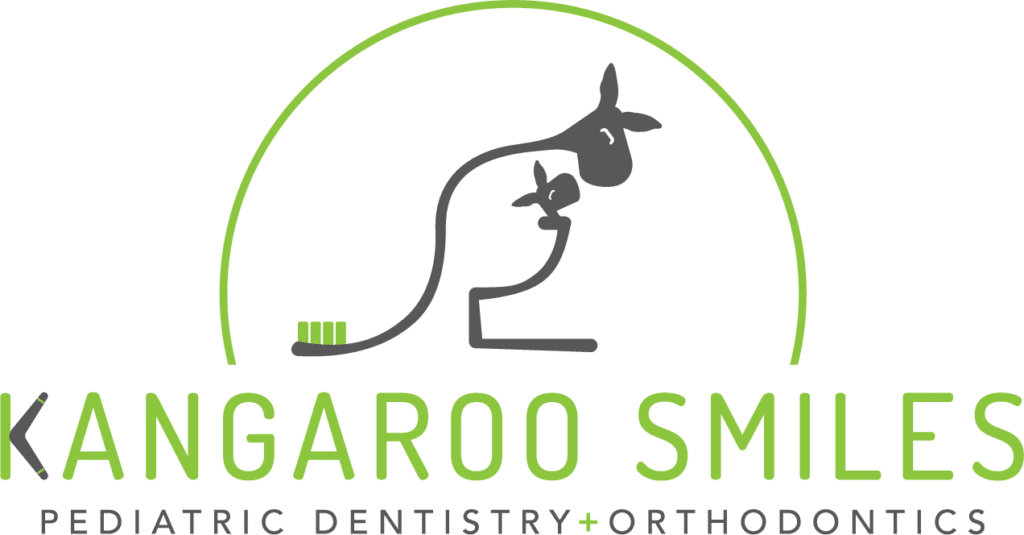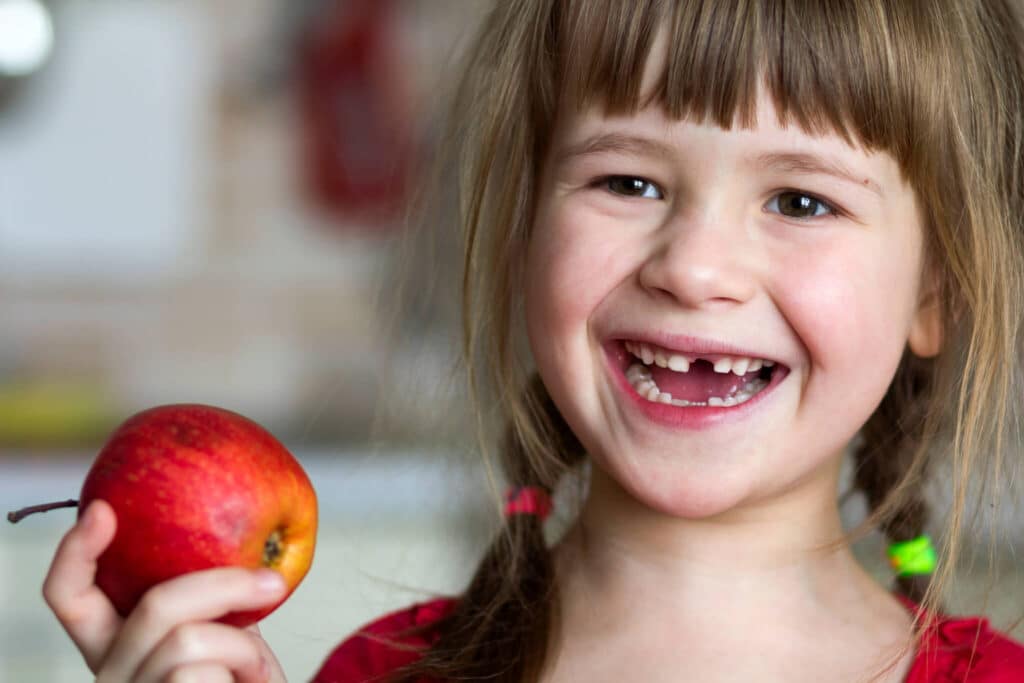Cavities are a common problem not just for children but for everyone. The simple acts of eating and drinking create plaque. Plaque is a sticky film of bacteria that produces acid in your mouth, attacking teeth and causing decay. This process occurs most often for children, which is why it’s important to schedule check-ups every six months (or more, if recommended by your pediatric dentist). Yet in addition to dental visits, parents can help their children prevent toddler tooth decay at home.
Kangaroo Smiles Pediatric Dentistry has new moms and dads covered! Our team consists of three expert dentists, each working at one of our two office locations. We also house the Kangaroo Krew—a collection of awesome staff members who do everything possible to make young patients smile. We give new parents information about the best preventive care methods outside of the dental office, as well as provide an array of pediatric services in-office.
No matter what your child’s needs happen to be, Kangaroo Smiles delivers! Read on to learn our top tips on how to combat tooth decay and keep your little one’s mouth healthy.
Seven Ways to Stop Toddler Tooth Decay in Its Tracks
A pediatric dentist evaluates a child’s teeth at the first visit to determine what specific program of brushing, flossing, and other treatments is necessary. Regardless of the particular instructions you and your child receive, there are some all-around great steps to implement that hinder the damaging effects of bacteria. Consider the age of your child and if you can try any of the following strategies at home:
Start Cleaning Early
Think you should wait for baby teeth to emerge before beginning a hygiene routine? Think again! Parents can use a clean washcloth or gauze to run over the baby’s gumline. Wiping the gums in this way prevents bacteria from settling and keeps teeth and gums clean.
- Utilize a Child-Sized Toothbrush
Proper equipment yields the best results. Make sure to find a small enough toothbrush that fits your child’s hand and has soft bristles.
- Offer a Sparing Amount of Toothpaste
For guidelines on toothpaste amounts for toddlers, remember “the rice and the pea.” Children under the age of three should start with a rice-grain amount of toothpaste that contains fluoride; when they surpass the age of three, the amount of toothpaste can be upgraded to a pea-sized amount.
- Give Them Healthy, Nutrient-Dense Foods
Eat for strong teeth! There are plenty of foods that, when you consume them, produce a healthier mouth environment. Fruits and vegetables containing Vitamin C, including oranges, limes, and tomatoes (to name a few) can help kill bacteria that can cause gingivitis. Milk and cheese rich in vitamin D, calcium, and phosphate can lower acid levels in the mouth and reduce the chance of tooth decay.
Water is incredibly important for the purpose of rehydrating and also rinsing away food particles during or after meals. For more nutrition advice for your little one, talk to your dentist.
- Supervise Brushing, Flossing, and Rinsing
Helping a child to feel like a “big kid” helps motivate independent task completion. It’s important, however, for a child new to brushing to have supervision.
You’ll want to make sure your child is not putting too much pressure on the teeth or gums, as this could cause problems or pain. Also, children may be tempted when they first start brushing to swallow the toothpaste they use. Properly showing them how and when to spit can prevent this habit from forming.
- Set the Example
When children brush their teeth next to their parents who are also brushing, they feel connected! Encouraging awesome dental hygiene means showing your child how you take care of your own teeth. During this time, you can explain the difference in toothpaste sizes and answer any questions they have about their routine.
You can also make the process fun for both of you! Have a two-minute dance party while you brush, or make up a story in which your child needs to brush away the bad guys (aka, bacteria). Getting creative can make oral hygiene seem less like a chore and more like a bonding activity.
- Ask Questions
What exactly is tooth enamel, and what keeps it strong? Why does my child have white spots on her teeth? Is this food okay to eat, and how often?
Parents naturally have questions. At Kangaroo Smiles, we strive to clear up any confusion new or long-time parents have regarding child tooth health. From changes in routine to dental product recommendations, Dr. Mona Beylin, Dr. Simon Beylin, and Dr. Cyrus Safizadeh all have the expertise necessary to give you the answers you need.
Think your child may already have a cavity developing? Some common symptoms include complaints of a toothache, swollen gums, pain when chewing, and the presence of white spots, tooth discolorations, or holes in the teeth. For an official diagnosis, make sure you schedule a dental appointment at the first sign of an issue.
Stop toddler tooth decay before it starts! Contact Kangaroo Smiles today. Call our office at 978-425-1495 to schedule an appointment.


 Start Cleaning Early
Start Cleaning Early